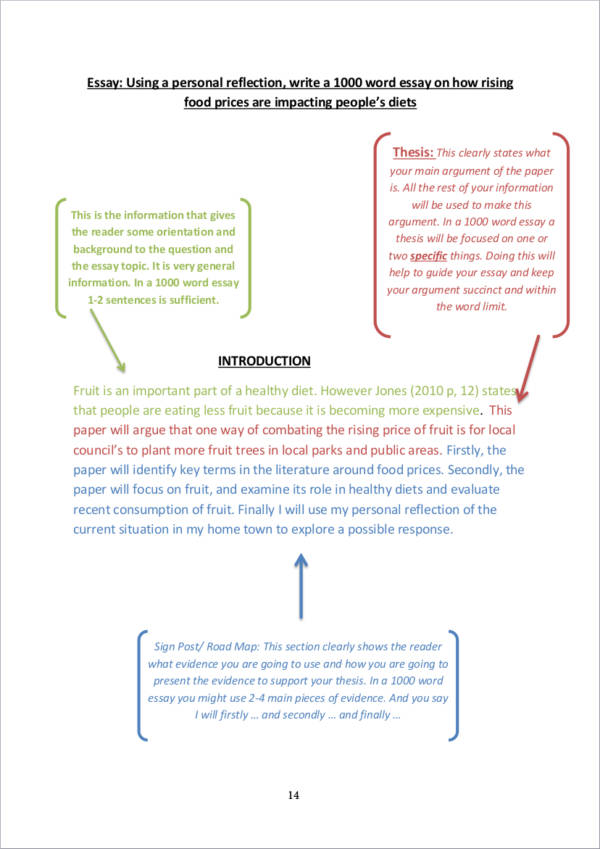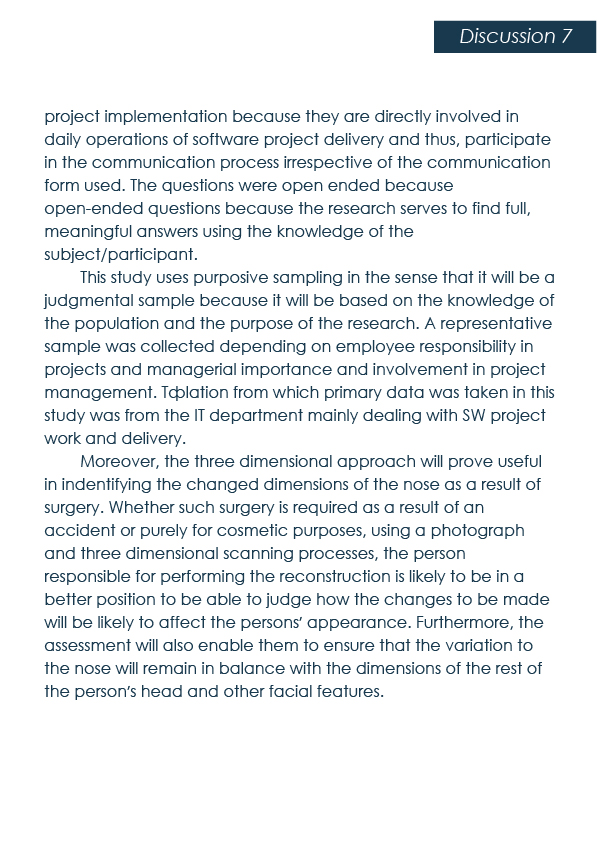
Mar 06, · Dissertation acknowledgements. Published on March 6, by Courtney Gahan. Revised on October 13, The dissertation acknowledgements section is where you thank those who have helped and supported you during the research and writing process When writing a dissertation or thesis, the results and discussion sections can be both the most interesting as well as the most challenging sections to write. You may choose to write these sections separately, or combine them into a single chapter, depending on your university’s guidelines and your own preferences What exactly is the discussion chapter? The discussion chapter is where you interpret and explain your results within your thesis or dissertation. This contrasts with the results chapter, where you merely present and describe the analysis findings (whether qualitative or quantitative).In the discussion chapter, you elaborate on and evaluate your research findings, and discuss the significance
How to Write the Introduction of a Dissertation - Research Prospect
Learning Skills:. Writing Your Dissertation or Thesis eBook. Part of the Skills You Need Guide for Students. Subscribe to our FREE newsletter and start improving your life in just 5 minutes a day. When writing a dissertation or thesis, the results and discussion sections can be both the most interesting as well as the most challenging sections to write.
This can focus your mind on what the results actually show and help you to sort them in your head. However, many people find it easier to combine the results with their implications as the two are closely connected. The Results section should set out your key experimental results, including any statistical analysis and whether or not the results of these are significant.
You should cover any literature supporting your interpretation of significance. It does not have to include everything you did, particularly for a doctorate dissertation. However, for an undergraduate or master's thesis, you will probably find that you need to include most of your work.
You should write your results section in the past tense: you are describing what you have done in the past. Every result included MUST have a method set out in the methods section.
Check back to make sure that you have included all the relevant methods. Conversely, every method should also have some results given so, if you choose to exclude certain experiments from the results, make sure that you remove mention of the method as well.
If you are unsure whether to include certain results, go back to your research questions and decide whether the results are relevant to them. If they are relevant, you should include them. Having decided what to include, next decide what order to use. You also need to consider how best to present your results: tables, figures, graphs, or text. Try to use a variety of different methods dissertation how to write discussion presentation, and consider your reader: 20 pages of dense tables are hard to understand, dissertation how to write discussion, as are five pages of graphs, but a single table and well-chosen graph that illustrate your overall findings will make things much clearer.
Make sure that each table and figure has a number and a title. Number tables and figures in separate lists, but consecutively by the order in which you mention them in the text. Summarise your results in the text, drawing on the figures and tables to illustrate your points. The text and figures should be complementary, not repeat the same information.
You should refer to every table or figure in the text. Make sure that you including information about the size and direction of any changes, dissertation how to write discussion, including percentage change if appropriate. Statistical tests should include details of p values or confidence intervals and limits.
You will, almost inevitably, find that you need to include some slight discussion of your results during this section. See our pages: Analysing Qualitative Data and Simple Statistical Analysis for more information on analysing your results.
The discussion section therefore needs to review your findings in the context of the literature and the existing knowledge about the subject. You also need to demonstrate that you understand the limitations of your research and the implications of your findings for policy and practice.
This section dissertation how to write discussion be written in the present tense. The Discussion section needs to follow from your results and relate back to your literature review. Make sure that everything you discuss is covered in the results section. Most people are likely to write this section best by preparing an outline, setting out the broad thrust of the argument, and how your results support it, dissertation how to write discussion.
You may find techniques like mind mapping are helpful in making a first outline; check out our page: Creative Thinking for some dissertation how to write discussion about how to think through your ideas. You should start by referring back to your research questions, discuss your results, then set them into the context of the literature, and then into broader theory. Once you have your outline in front of you, you can start to map out how your results fit into the outline.
This will help you to see whether your results are over-focused in one area, which is why writing up your research as you go along can be a helpful process. For each theme or area, you should discuss how the results help to answer your research question, and whether the results are consistent with your expectations and the dissertation how to write discussion. Your explanations may include issues such as a non-representative sample for convenience purposes, a response rate skewed towards those with a particular experience, or your own involvement as a participant for sociological research.
You do not need to be apologetic about these, because you made a choice about them, which you should have justified in the methodology section.
A full understanding of the limitations of your research is dissertation how to write discussion of a good discussion section. At this stage, you may want to revisit your literature review, unless you submitted it as a separate submission earlier, and revise it to draw out those studies which have proven more relevant. Conclude by summarising the implications of your findings in brief, and explain why they are important for researchers and in practice, and provide some suggestions for further work.
You may also wish to make some recommendations for practice. As before, this may be a separate section, or included in your dissertation how to write discussion. The dissertation how to write discussion and discussion, including conclusion and recommendations, are probably the most substantial sections of your dissertation, dissertation how to write discussion.
Once completed, you can begin to relax slightly: you are on to the last stages of writing! Continue to: Dissertation: Conclusion and Extras Writing your Methodology.
See also: Writing a Literature Review Writing a Research Proposal Academic Referencing What Is the Importance of Using a Plagiarism Checker to Check Your Thesis?
LEARNING SKILLS Writing a Dissertation or Thesis Results and Discussion. Search SkillsYouNeed:. Writing Your Dissertation or Thesis eBook Part of the Skills You Need Guide for Students. Subscribe You'll get our 5 free 'One Minute Life Skills' and our weekly newsletter. Dissertation how to write discussion never share your email address and you can unsubscribe at any time.
Writing your Dissertation: Results and Discussion See also: Writing Your Methodology. Top Tip Summarise your results in the text, drawing on the figures and tables to illustrate your points. Top Tip At this stage, you may want to revisit your literature review, unless you submitted it as a separate submission earlier, and revise it to draw out those studies which have proven more relevant.
How to Write The Discussion Section of Research Writing
, time: 4:16Thesis - Wikipedia

Mar 06, · Dissertation acknowledgements. Published on March 6, by Courtney Gahan. Revised on October 13, The dissertation acknowledgements section is where you thank those who have helped and supported you during the research and writing process #1 – The Opening Section. The very first essential ingredient for your dissertation introduction is, well, an introduction or opening section. Just like every other chapter, your introduction chapter needs to start by providing a brief overview of what you’ll be covering in the chapter.. This section needs to engage the reader with clear, concise language that can be easily understood and When writing a dissertation or thesis, the results and discussion sections can be both the most interesting as well as the most challenging sections to write. You may choose to write these sections separately, or combine them into a single chapter, depending on your university’s guidelines and your own preferences
No comments:
Post a Comment